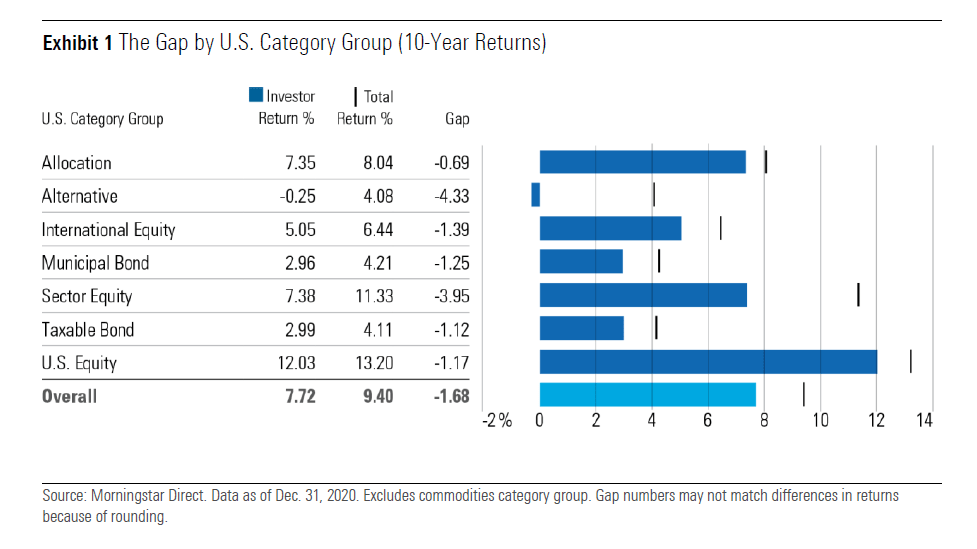Multiple studies have shown that individual investors always tend to earn less than the funds they are invested in especially over the long-term. This is because many investors try to time the market and hence sell the mutual fund or ETF at the presumed peak and then buy back again at the wrong time as well. Morningstar published a research study on the investor returns earlier this year. The following chart shows the gap in investor returns and fund returns in terms of 10-year returns for various asset types:
Click to enlarge
Source: Mind the Gap 2021 – A report on investor returns in the United States. , MorningStar
From the report:
Our annual study of dollar-weighted returns (also known as investor returns) finds investors earned
about 7.7% per year on the average dollar they invested in mutual funds and ETFs over the 10 years
ended Dec. 31, 2020. This is about 1.7 percentage points less than the total returns their fund
investments generated over the same period. This shortfall, or gap, stems from inopportunely timed purchases and sales of fund shares, which cost investors nearly one sixth the return they would have earned if they had simply bought and held.That investor-return gap is more or less in line with the gaps we found for the four previous rolling 10-year periods. The persistent gap between the returns investors actually experience and reported total returns makes cash flow timing one of the most significant factors—along with investment costs and tax efficiency—that can influence an investor’s end results.
Our research imparts a few lessons on how investors can avoid these gaps and capture more of their fund investments’ total returns. Investors can improve their results by holding a small number of widely diversified funds, automating mundane tasks like rebalancing, avoiding narrower or highly volatile funds, and embracing techniques that put investing on autopilot, such as dollar-cost averaging.
The complete report is worth a read.




